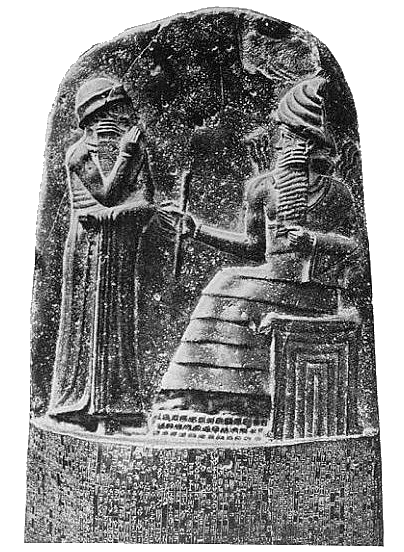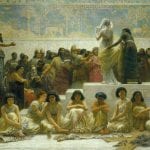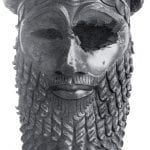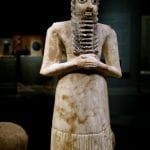Mesopotamian religion was central to Mesopotamians as they believed the divine affected every aspect of human life. Mesopotamians were polytheistic; they worshipped several major gods and thousands of minor gods. Each Mesopotamian city, whether Sumerian, Akkadian, Babylonian or Assyrian, had its own patron god or goddess. Each Mesopotamian era or culture had different expressions and interpretations of the gods. Marduk, Babylon’s god, for example, was known as Enki or Ea in Sumer.
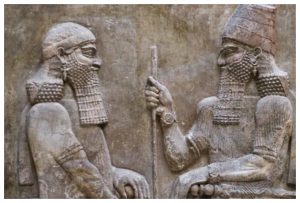
Clay tablets found in archeological excavations describe the cosmology, mythology and religious practices and observations of the tibme. Some Mesopotamian myths were reflected in Biblical stories including that of the Garden of Eden, the Flood, the Creation and the Tower of Babel. As the world’s oldest religion, Mesopotamian beliefs influenced the monotheistic religions that came after, Judaism, Christianity and Islam.
Regarding Mesopotamian religion, in early Mesopotamia, priests were the initial rulers as all authority came from the god. Priests then were both representative of the god and mediator between the god and the people. Later, the secular power was established in a king, although kings also had specific religious duties. Kings ruled by the god’s favor and so were imbued with a semi-divine authority. Kings, priests and priestesses were the most important people. They were central to Mesopotamian Religion and, indeed, its society as a whole.
For the full “History Unplugged” podcast, please click here!
Mesopotamian Religion – Cosmology
If Mesopotamian pantheon and mythology were not simple and straightforward, the cosmology was. The universe was the heaven and earth, the term for which was an-ki or heaven-earth. Earth was flat, surrounded by a hollow space in which everything existed. A solid surface, thought to be made of tin, enclosed the an-ki. Within the space was lil, a word that means air or breath. All around the an-ki was the sea, abzu.
Nergal and Ereshkigal ruled the underworld, where people went when they died. People entered the underworld from their graves. First, they had to cross a river via a ferry. Once there, a soul was judged by Utu, another god. A positive judgment meant an afterlife of happiness; however, most Mesopotamians thought the afterlife would be dreary.
Pantheon
Central to Mesopotamian religion were, of course, its gods. Mesopotamia’s gods were humans writ large; they were human in form and characteristics. Although all powerful, the gods behaved much like humans—they fought, ate, drank, married and had children. Although they were immortal, they could be hurt and paradoxically, killed. Each god had charge of some aspect of existence according to a set of rules that ensured the continued functioning of the cosmos.
In Mesopotamian religion, the four primary deities were An, Ki or Ninhursag, Enlil and Enki, who ruled heaven, earth, air and sea, respectively. Enlil gradually takes on all of An’s powers and becomes the most powerful god. The four gods are the progenitors of the rest of the pantheon. Three other gods were also important: Nanna, another name for the moon god, Sin; Utu, the god of the sun and judgment; and Inanna, the goddess of love and war. Mesopotamia’s pantheon of gods and their deeds make up the region’s rich, dense mythology, which will be explored in of another article.
This article is part of our larger resource on Mesopotamian culture, society, economics, and warfare. Click here for our comprehensive article on ancient Mesopotamia.
Cite This Article
"Mesopotamian Religion: Gods, Practice, And Priests" History on the Net© 2000-2024, Salem Media.
April 17, 2024 <https://www.historyonthenet.com/mesopotamian-religion>
More Citation Information.



